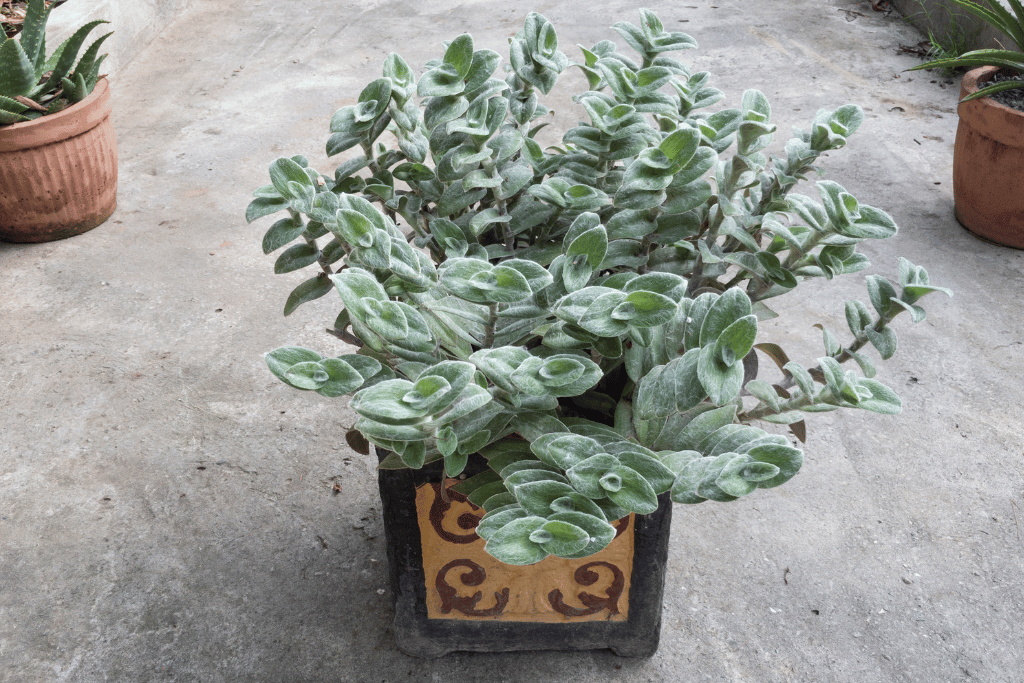I recently got the chance to explore a variety of flowers that start with U. I found it pretty interesting to discover these less common blooms that don’t often get the spotlight. Let me tell you about a few of them.
First off, there’s the “Uva-Ursi.” It’s a small shrub with these cute little bell-shaped flowers. I came across it in a natural area, just hanging out and adding a touch of charm to the surroundings.
Then there’s the “Upright Prairie Coneflower.” It stands tall and sturdy, with vibrant yellow petals. It’s the kind of flower that seems like it could withstand anything nature throws at it.
Oh, and we can’t forget the “Umbrella Sedge.” This one’s unique because it doesn’t have traditional petals. Instead, it has these umbrella-like structures that give it a distinctive look.
And then, there’s the “Umbrellawort.” It’s a wildflower I spotted near a stream. The small clusters of white and yellow flowers create a simple yet elegant sight.
It’s funny how you don’t really think about these flowers that start with the letter U, until you come across them. They might not be as well-known as roses or daisies, but they definitely have their own kind of beauty. Exploring these U-named flowers gave me a new appreciation for the variety that exists in the world of plants. I’d love to share more with you. So, keep reading.
18 Flowers That Start With U
1. Ursinia: A Splash of Color in the Garden

Ursinia, scientifically known as Ursinia anthemoides, is a genus of flowering plants that adds a vibrant splash of color to gardens and landscapes. Belonging to the Asteraceae family, Ursinia is native to South Africa and is prized for its charming daisy-like blooms.
The flowers of Ursinia come in various bright colors, including yellow, orange, and red, creating a striking contrast against the green foliage. These blooms resemble miniature sunflowers and are often used to create lively displays in flower beds and containers. Ursinia’s ability to thrive in sunny and well-drained locations makes it a popular choice for adding a burst of color to gardens.
2. Umbrella Sedge: Architectural Grass for Wetlands
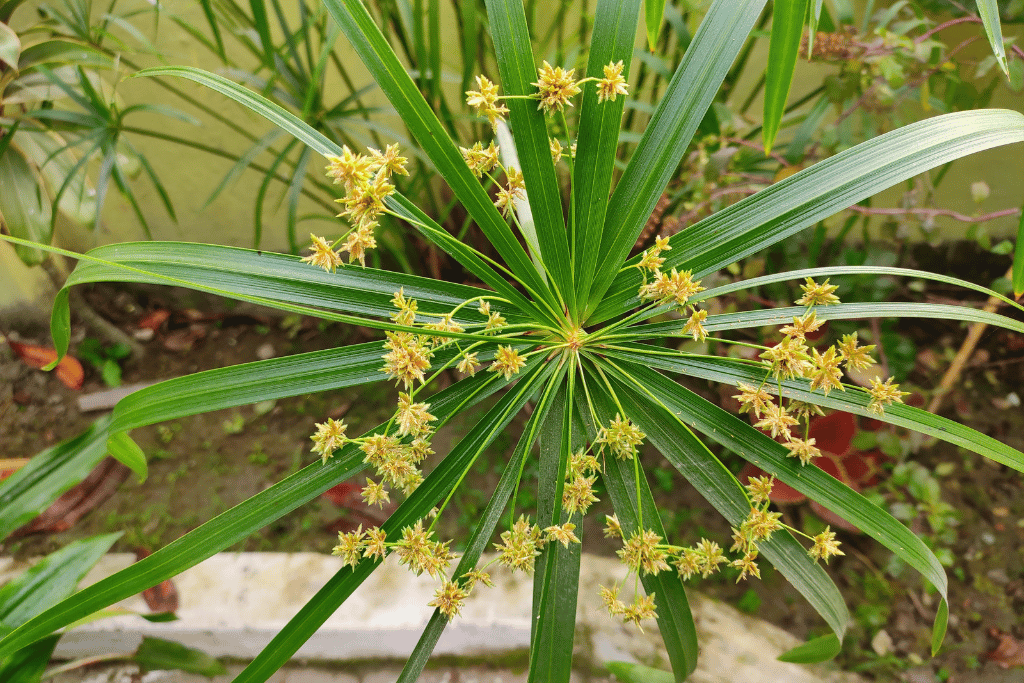
Umbrella Sedge (Cyperus alternifolius) is an architectural grass that thrives in wetland and aquatic environments. Belonging to the Cyperaceae family, this sedge is known for its distinctive umbrella-like arrangement of leaves that create a unique and eye-catching appearance.
Umbrella Sedge is a popular choice for adding texture and visual interest to water gardens, ponds, and marshy landscapes. The leaves of Umbrella Sedge radiate out from the center of the plant, resembling the spokes of an umbrella. The plant produces inconspicuous brownish flowers that are often overshadowed by its remarkable foliage.
3. Umbrella Plant : Graceful Beauty in Moist Areas

Umbrella Plant produces clusters of small, star-shaped pink or white blooms that appear in early spring. These delicate flowers emerge on tall stems above the foliage, adding a layer of beauty to the plant. Umbrella Plant’s ability to thrive in damp, shady environments makes it a sought-after choice for adding elegance to water features, woodland gardens, and moist landscapes.
Botanically known as Darmera peltata, it is a deciduous perennial plant that thrives in moist and shaded areas. Belonging to the Saxifragaceae family, this plant is appreciated for its large and distinctive umbrella-like leaves that create a lush and inviting atmosphere. It is also known as Indian rhubarb.
4. Uva-Ursi – Delicate Groundcover with Medicinal History

Uva-Ursi’s name, which means “bear’s grape,” is a nod to the fact that bears are known to enjoy the plant’s small berries. Uva-Ursi (Arctostaphylos uva-ursi) or Bearberry, is a delicate groundcover plant that has historical significance due to its medicinal uses.
Native to North America, Europe, and Asia, Uva-Ursi belongs to the Ericaceae family and features small, bell-shaped pink or white flowers that bloom in spring. While the flowers themselves may not be particularly showy, the plant’s leaves have been used in traditional medicine for their potential diuretic and antiseptic properties.
5. Upland Cotton – Source of Fiber and Industry

The flowers of Upland Cotton are pale yellow to cream in color and have a bell-like shape. They are typically self-pollinating, producing cotton bolls that contain the valuable cotton fibers. These fibers are harvested, processed, and used to create a wide range of products, making Upland Cotton a vital crop in many economies.
In scientific languge, Upland Cotton is called Gossypium hirsutum, is a significant plant in the world of agriculture and textiles. While it’s not known for its showy flowers, its economic and industrial importance cannot be overlooked. Upland Cotton belongs to the Malvaceae family and is cultivated for its soft, white fibers that can be used to make cotton fabric.
6. Ulex – Hardy Beauty of the Heathlands
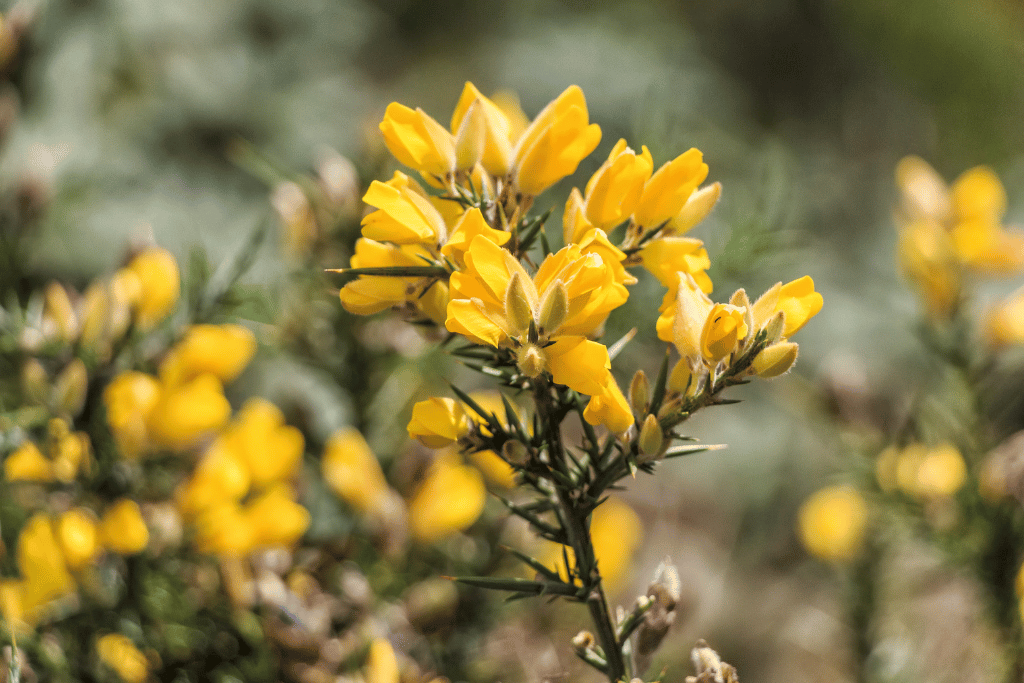
Ulex, commonly known as Gorse, is a hardy shrub that adds beauty to heathlands and coastal landscapes. While not a traditional flowering plant, Ulex is known for its vibrant and fragrant yellow blooms that appear throughout the year. These blooms give Ulex a striking appearance and a delightful scent.
Belonging to the Fabaceae family, Ulex’s dense foliage and thorny branches provide shelter for various wildlife species. The plant is also known for its ability to thrive in poor, acidic soils, making it a resilient presence in environments where other plants might struggle.
7. Umbrella Magnolia: Majestic Shade Provider

Umbrella Magnolia (Magnolia tripetala), is a deciduous tree that stands out for its large, umbrella-like leaves and impressive stature. The leaves of Umbrella Magnolia are its defining feature, with each leaf resembling a broad, green umbrella. The tree produces showy white flowers that emit a lemony fragrance, adding to its appeal.
As a shade tree, Umbrella Magnolia’s broad canopy offers relief from the sun and creates a comfortable outdoor environment. Belonging to the Magnoliaceae family, this magnolia species is native to the eastern United States and offers both ornamental value and shade provision.
8. Upright Clematis: Vertical Charm in the Garden

Belonging to the Ranunculaceae family, this clematis variety is recognized for its unique growth habit and delicate flowers. Upright Clematis grows in a compact, columnar form, making it well-suited for smaller spaces and containers. Its blue-violet flowers bloom from late spring to early summer, creating a stunning contrast against the dark green foliage.
Upright Clematis, scientifically known as Clematis ‘Stand by Me,’ is a cultivar of clematis that offers vertical charm and elegance to gardens and landscapes. The plant’s manageable size and striking blooms make it a favorite for vertical accents, trellises, and patio containers.
9. Urn Plant – Architectural Elegance in Succulent Form
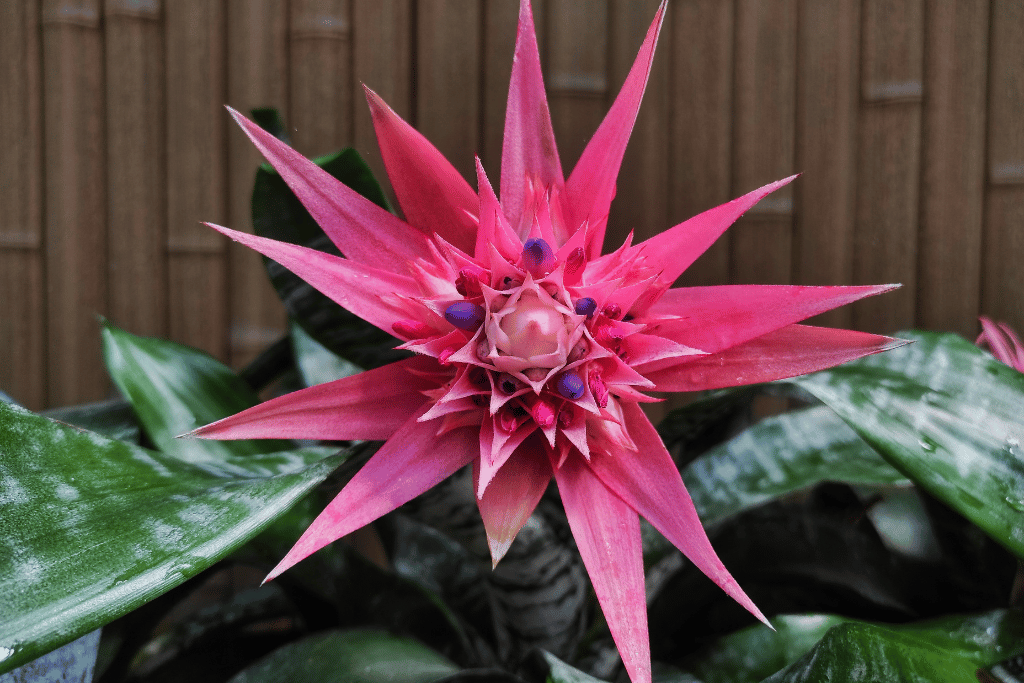
Urn Plant is an epiphytic bromeliad belonging to the Bromeliaceae family and is known for its rosette of thick, leathery leaves that create a natural urn-like shape. Scientifically known as Aechmea, it is a striking succulent that adds architectural elegance to indoor and outdoor spaces.
While Urn Plant’s flowers may not be its main highlight, they emerge from the center of the rosette in vibrant shades of pink, red, or purple, depending on the species. These unique flowers can last for several months and attract hummingbirds and other pollinators. The plant’s distinctive appearance and low-maintenance requirements make it a popular choice for modern landscapes and interior decor.
10. Ulmus – Iconic Trees of the Northern Hemisphere

Ulmus, commonly known as Elm trees, are iconic trees that are part of the landscape in many regions of the Northern Hemisphere. These deciduous trees belong to the Ulmaceae family and are known for their distinctive serrated leaves and strong wood. The flowers of Elm trees are inconspicuous and often go unnoticed. They appear in early spring before the leaves emerge and are wind-pollinated.
Elm trees are known for their grandeur and have been historically valued for their timber and shade-providing qualities. While some Elm species have faced challenges due to diseases, they remain important and recognizable elements of many urban and natural landscapes.
11. Uncarina – Desert Gems with Striking Flowers
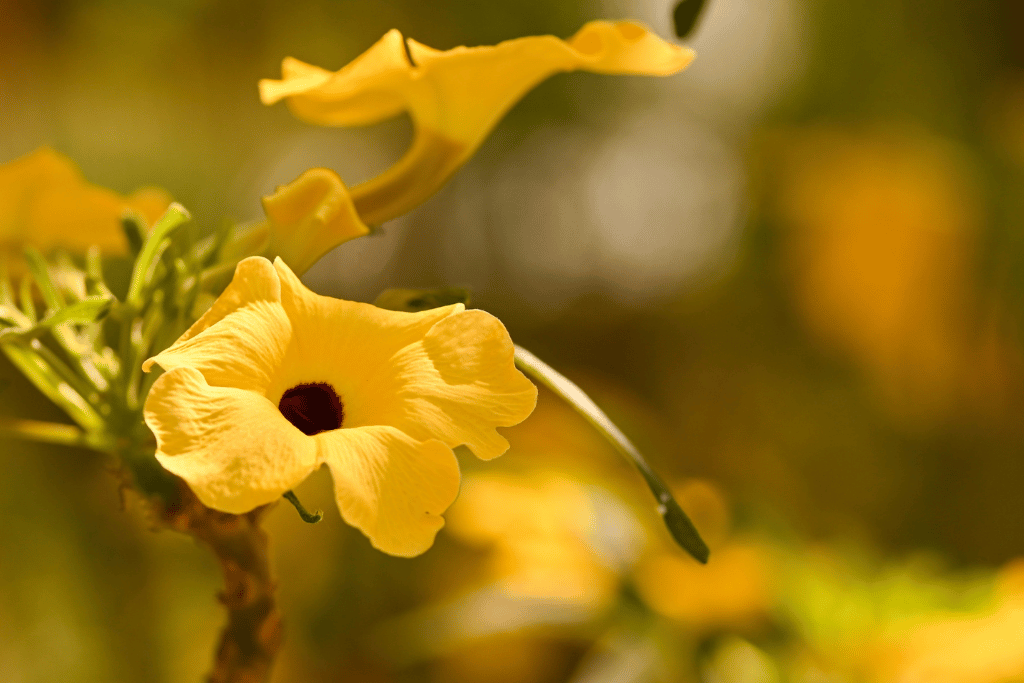
Uncarina, commonly known as Sand Dollar or Hook Thorn, are unique succulents that thrive in arid environments. Native to Madagascar, Uncarina belong to the Pedaliaceae family and are prized for their peculiar appearance and striking flowers.
The flowers of Uncarina are large and showy, often with a star-like or trumpet shape. They come in shades of yellow, orange, or red, creating a vibrant contrast against the plant’s thick, fleshy leaves. Uncarina flowers are followed by distinctive seed pods that are shaped like hooked thorns, giving the plant one of its common names, “Hook Thorn.”
12. Urn Orchid – Intricate Beauty of the Orchid Family

Urn Orchids are found in diverse habitats across various regions, adding a touch of elegance to the Orchid family’s incredible diversity. These orchids belong to the Orchidaceae family and are notable for their unusual and captivating blooms.
The flowers of Urn Orchids vary in color and form but often feature intricate patterns and shapes. The lip of the flower can resemble a small vessel or urn, contributing to the plant’s common name. It is scientifically known as Eulophia, a genus of orchids that showcases intricate beauty through its unique floral structures.
13. Uvularia – Graceful Spring Ephemerals
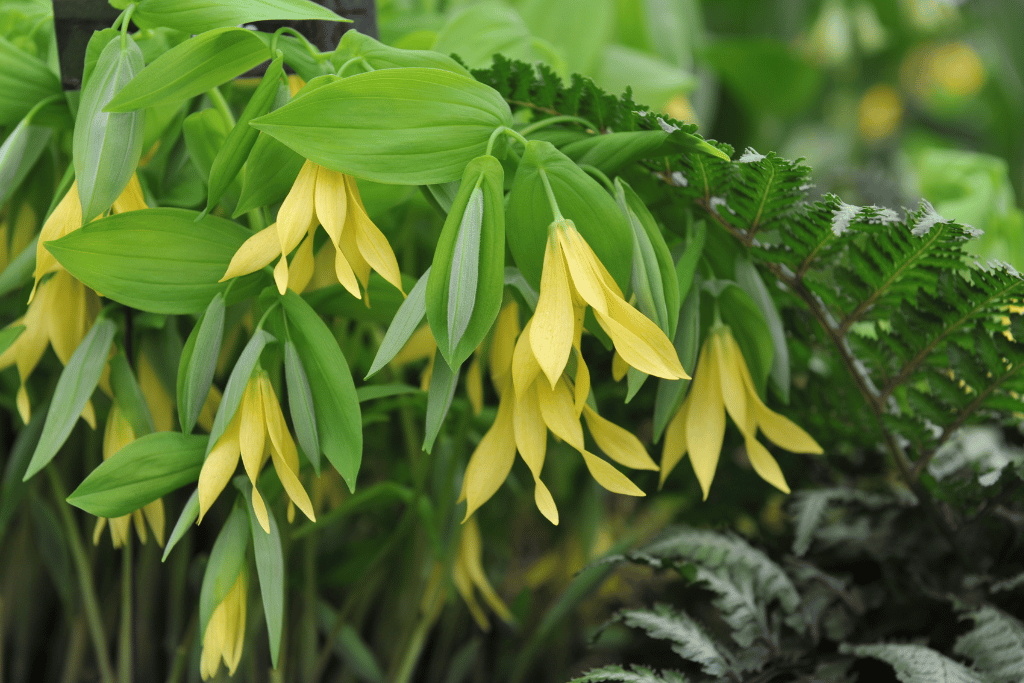
Uvularia, commonly known as Bellwort, is a genus of spring-blooming plants that bring graceful beauty to woodland landscapes. These perennial herbs belong to the Colchicaceae family and are known for their delicate, drooping flowers that appear in early spring.
Its graceful appearance and early flowering make it a favorite among wildflower enthusiasts. Uvularia bell-shaped flowers and typically yellow, creating a charming contrast against the backdrop of emerging forest foliage. While the flowers may not be large or showy, their presence in woodlands adds a touch of ephemeral beauty to the landscape.
14. Urena – Tropical Beauty with Velvety Leaves
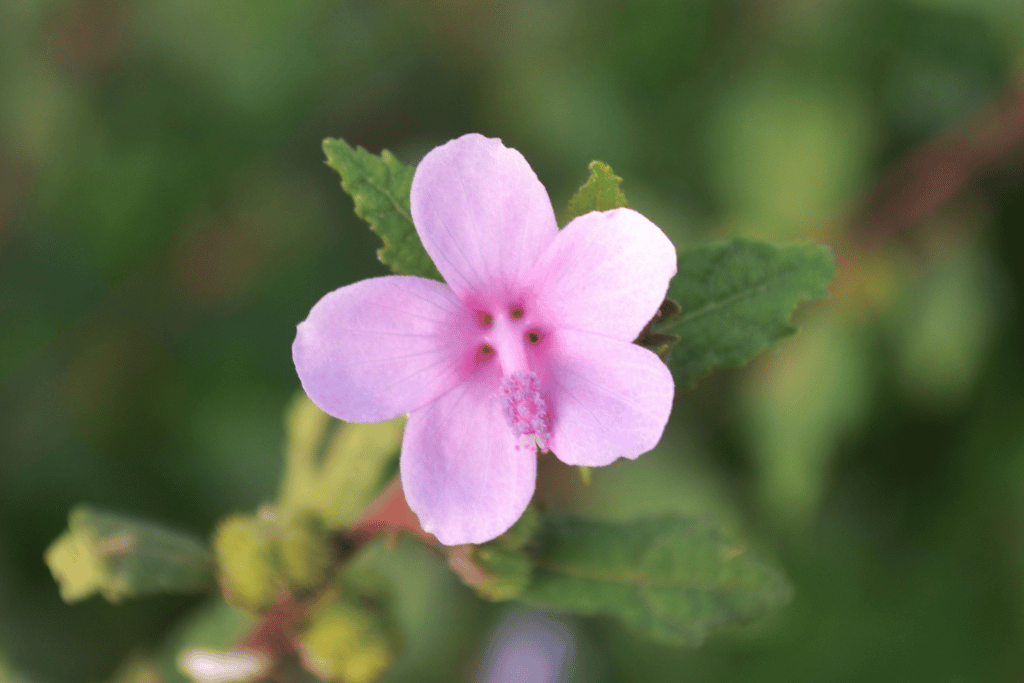
The flowers of Urena are small and come in shades of pink, purple, or white. What makes Urena stand out are its fruit structures, which are covered in tiny hooked hairs that can easily attach to clothing and fur, giving rise to its common name “Burr Bush.”
Despite their prickly nature, the fruits and leaves of Urena have been used in traditional medicine in various cultures. Urena, commonly known as Caesar’s Weed or Burr Bush, is a tropical flowering plant known for its velvety leaves and unique fruit structures. Belonging to the Malvaceae family, Urena adds a touch of lushness and color to tropical landscapes.
15. Usambara Violet – Exquisite African Beauties

Usambara Violet, scientifically known as Saintpaulia, is a beloved flowering plant native to Tanzania. These exquisite blooms, belonging to the Gesneriaceae family, have captured the hearts of plant enthusiasts worldwide and are often cherished as houseplants. They have similarities with African violets in appearance.
The flowers of Usambara Violets are small but intricate, with various colors and patterns ranging from solid shades to intricate designs. Their charming appearance has led to countless cultivars and hybrids. Usambara Violets are known for their relatively easy care and ability to bloom indoors, brightening up homes with their delicate beauty.
16. Ume: Delicate Blossoms of Early Spring

Belonging to the Rosaceae family, Ume is native to China, Korea, and Japan. It’s scientifically known as Prunus mume, a flowering tree with a special place in Japanese culture. Commonly referred to as the Japanese Apricot or Chinese Plum, Ume is known for its delicate blossoms that mark the arrival of early spring.
The blossoms of Ume come in a range of colors, including shades of white, pink, and red. These fragrant flowers appear before the tree’s leaves, creating a stunning contrast against the winter landscape. Ume’s significance goes beyond its beauty; it is often associated with themes of renewal and resilience. The fruit of Ume is used to make a traditional Japanese plum liqueur called “umeshu.”
17. Upright Prairie Coneflower – Vertical Splendor in Prairie Landscapes

Upright Prairie Coneflower’s distinctive spiky, cone-like centers surrounded by drooping petals create a striking architectural presence that draws the eye. Their vibrant hues, ranging from yellow to reddish-brown, add bursts of color to open fields and meadows. As a native wildflower, Upright Prairie Coneflower contributes to local ecosystems by providing nectar for pollinators and serving as a habitat for beneficial insects.
Upright Prairie Coneflower, also known as Ratibida columnifera, stands tall as a beacon of beauty in prairie landscapes. Belonging to the Asteraceae family, these flowers symbolize strength, resilience, and natural elegance. Its ability to thrive in varying soil conditions underscores its adaptability and resilience in the face of changing environments.
18. Umbrellawort – Whimsical Canopies of Blooms
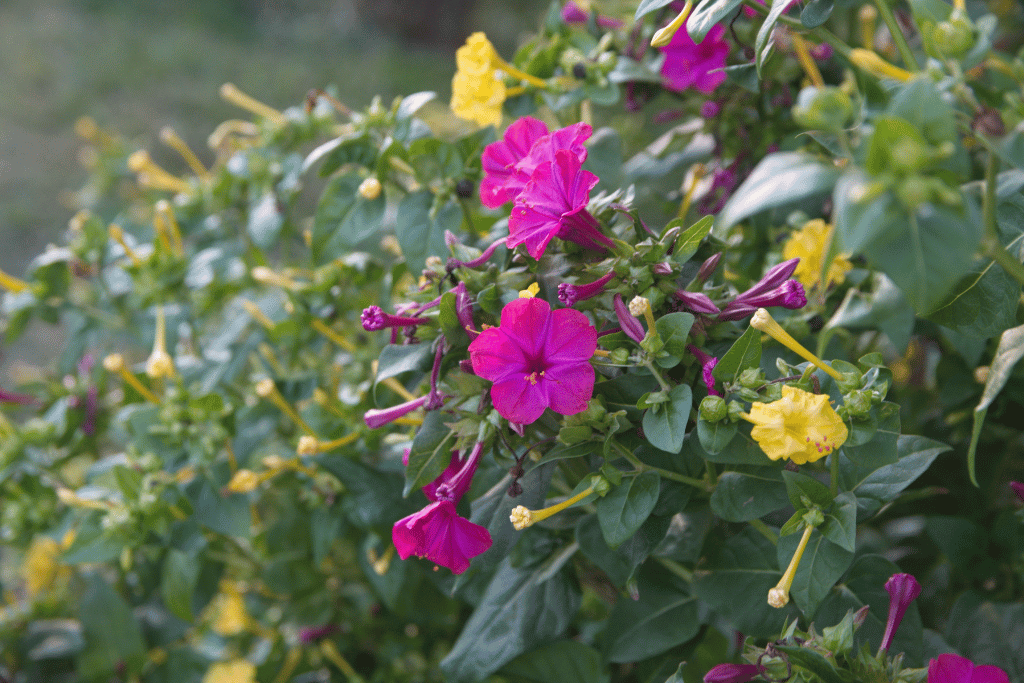
Umbrellawort (Psathyrotes ramosissima), graces gardens with its unique and whimsical bloom clusters. As a member of Asteraceae family, these flowers symbolize protection, creativity, and playful elegance. Umbrellawort’s flowers are arranged in umbrella-like clusters, creating an enchanting and captivating display that adds charm to landscapes. Their delicate petals and intricate arrangement invite close inspection and appreciation for the intricate designs found in nature.
Umbrellawort’s ability to thrive in open and sunny environments showcases its connection to the sky and the radiant energy of the sun. Its presence in gardens offers a touch of wonder and magic, reminding us of the playful beauty that can be discovered in the natural world.


